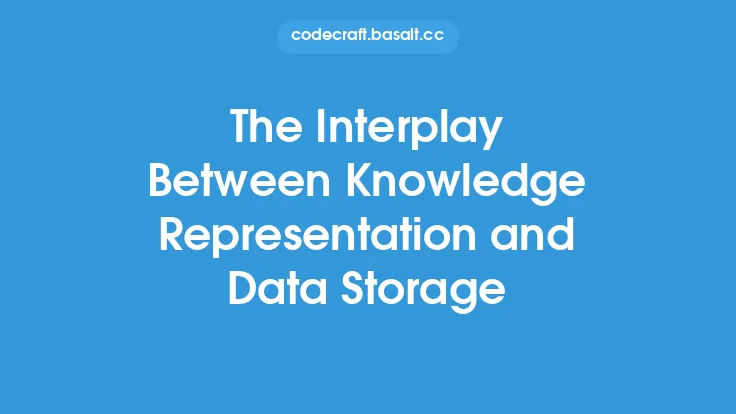Data normalization is a fundamental concept in database systems that plays a crucial role in ensuring the integrity and consistency of data. In the context of data warehousing, data normalization is essential for creating a robust and scalable data storage system. Data warehousing involves the integration of data from multiple sources into a single repository, making it possible to analyze and extract insights from large datasets. However, without proper data normalization, data warehousing efforts can be hindered by data inconsistencies, redundancies, and anomalies.
Introduction to Data Normalization in Data Warehousing
Data normalization in data warehousing involves the process of organizing data into a structured format that minimizes data redundancy and dependency. This is achieved by applying a set of rules and techniques that ensure data consistency and integrity. In a data warehousing context, data normalization is critical for several reasons. Firstly, it helps to eliminate data inconsistencies and errors that can arise from integrating data from multiple sources. Secondly, it enables the creation of a scalable data storage system that can handle large volumes of data. Finally, it facilitates the analysis and extraction of insights from data by providing a consistent and standardized format for data representation.
The Role of Data Normalization in Data Warehousing Architecture
Data normalization plays a vital role in data warehousing architecture, which typically consists of three tiers: the presentation layer, the application layer, and the data layer. The data layer is where data normalization takes place, and it is responsible for storing and managing data in a normalized format. The application layer sits on top of the data layer and is responsible for accessing and manipulating data. The presentation layer is the topmost layer and is responsible for presenting data to end-users. In a data warehousing architecture, data normalization ensures that data is consistent and standardized across all three tiers, making it possible to integrate data from multiple sources and provide a unified view of data to end-users.
Data Normalization Techniques in Data Warehousing
Several data normalization techniques are used in data warehousing, including entity-relationship modeling, dimensional modeling, and star and snowflake schema design. Entity-relationship modeling involves the creation of a conceptual model of data that represents entities and their relationships. Dimensional modeling involves the creation of a physical model of data that represents facts and dimensions. Star and snowflake schema design involves the creation of a schema that represents facts and dimensions in a centralized or decentralized manner. These techniques help to ensure that data is normalized and consistent, making it possible to analyze and extract insights from large datasets.
Benefits of Data Normalization in Data Warehousing
Data normalization in data warehousing offers several benefits, including improved data consistency, reduced data redundancy, and enhanced data integrity. By normalizing data, organizations can ensure that data is consistent and standardized across all systems and applications, making it possible to integrate data from multiple sources and provide a unified view of data to end-users. Data normalization also helps to reduce data redundancy, which can lead to data inconsistencies and errors. Finally, data normalization enhances data integrity by ensuring that data is accurate, complete, and up-to-date.
Challenges and Limitations of Data Normalization in Data Warehousing
Despite the benefits of data normalization in data warehousing, there are several challenges and limitations that organizations must consider. One of the main challenges is the complexity of data normalization, which can require significant time and resources to implement. Another challenge is the need for ongoing maintenance and updates, which can be time-consuming and costly. Additionally, data normalization can lead to increased data latency, which can impact real-time analytics and decision-making. Finally, data normalization can be limited by the quality of source data, which can be incomplete, inaccurate, or inconsistent.
Best Practices for Implementing Data Normalization in Data Warehousing
To overcome the challenges and limitations of data normalization in data warehousing, organizations should follow best practices that ensure data consistency, integrity, and quality. One best practice is to establish a data governance framework that defines data policies, procedures, and standards. Another best practice is to use data normalization techniques and tools that are scalable and flexible. Additionally, organizations should ensure that data is properly documented and metadata is accurately maintained. Finally, organizations should continuously monitor and evaluate data quality and integrity to ensure that data normalization is effective and efficient.
Future Directions and Trends in Data Normalization and Data Warehousing
The future of data normalization and data warehousing is likely to be shaped by emerging trends and technologies, including big data, cloud computing, and artificial intelligence. Big data is driving the need for more scalable and flexible data warehousing solutions that can handle large volumes of data. Cloud computing is enabling organizations to deploy data warehousing solutions more quickly and cost-effectively. Artificial intelligence is being used to automate data normalization and data warehousing processes, making it possible to analyze and extract insights from data more quickly and accurately. As these trends and technologies continue to evolve, organizations must stay ahead of the curve by adopting innovative data normalization and data warehousing strategies that enable them to extract insights and value from their data.





